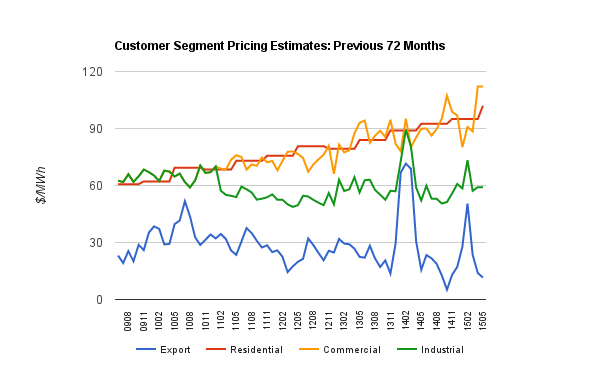Residential ratepayers paying up to retain large industrial business
More proof that expense of wind and solar power is driving away investment
An article in the Toronto Sun a few days ago noted that “Large industrial users of electricity could see the cost rise by up to 15% within six years, a new analysis by the Association of Major Power Consumers in Ontario (AMPCO) predicts.”
I believe most average ratepayers in Ontario would be delighted to look forward to only a 15% increase over the next six years.
As it stands, eliminating the Ontario Clean Energy Benefit (OCEB), coupled with the concurrent elimination of the Debt Retirement Charge January 1, 2016, will raise rates by 7%. Add to that increase the recently announced drop in minimum classification requirements for “Class A” status and the Ontario Electricity Support Program (OESP) and an average ratepayer is looking at an increase of over 12% for just one year. The 12% increase doesn’t include a probable increase of 5% to be announced in mid-October of the current year to cover the cost of the wind and solar recently added to the grid.
My friend Scott Luft just posted a chart which clearly highlights the growth in the cost of electricity starting with the launch of the GEA in 2009 and its march upwards since that date!

Scott’s chart demonstrates residential and small commercial entities pay eight times what Ontario receives for our exported surplus energy that now represents almost 20% of Ontario’s total demand.
Additional to the cost of subsidizing exports is a cost picked up by those small commercial entities and residential ratepayers to support large industrial companies who reduce demand during the high five peak annual demand hours. A conservative estimate of those costs suggests those industrial customers received a benefit of over $650 million for 2014. That benefit will expand with additional companies qualifying under Energy Minister Chiraelli’s reduced peak of 3 megawatts (MW) starting in the current month. The reduction to a 3-MW peak should add another $200 million in costs to Class B ratepayers.
The other January 1, 2016 addition to Class B ratepayers will be the OESP with an estimated cost of at least $200 million. The OESP is to support the 570,000 electricity households (13%) that the Ontario Energy Board recently identified as living in “energy poverty.”
AMPCO had valid reasons to lobby the Provincial government for reduced pricing as a chart from their website shows consumption by their members (large industrial companies) fell from 24 terawatts (Twh1.:) in 2003 to only 17.5 TWh in 2014 and of 6 industrial classifications only one (metal ore mining) actually increased consumption. It has been stated by many economists that large international corporations look at two primary cost factors before considering expansion or establishing new facilities. Those two factors are labour and energy costs. With Ontario’s energy costs among the highest in North America we have basically scared away any new substantial investment and the well paid jobs that would be a natural fallout. The biggest drops in consumption came from Pulp, Paper and Paperboard Mills—down 65%— and from Motor Vehicle Manufacturing—down 53%. Overall consumption fell by 27%! While AMPCO didn’t include a chart to indicate employment in the six sectors, my guess would be that it has fallen by at least the same percentage as consumption.
This is further proof that the push for intermittent wind and solar generation has cost Ontario good paying jobs!
The current slogan Premier Wynne uses is “Building Ontario Up” but as is clearly evident she continues what her predecessor McGuinty started: Driving Ontario Down.
©Parker Gallant, June 17, 2015
1. A terawatt hour represents 1 billion killowatt hours or enough to supply over 100,000 average Ontario households.



4 Comments
Barbara
Jack up Hydro One customer bills to make the company worth more money and then sell the company.
Still going to get the increased HST from customer bills.
Barbara
Area Development, Oct.21, 2014
Samuel, Son & Co. Limited Plans 432.6 Million Manufacturing In Columbia, Tennessee
The steel firm (Ontario) plans to create 42 new Jobs in Maury County, Tennessee which is south of Nashville.
http://www.areadevelopment.com/newsitems/10-21-2014/samuel-son–co-manufacturing-center-columbia-tennessee465443.shtml
Barbara
Should be: $32.6 million